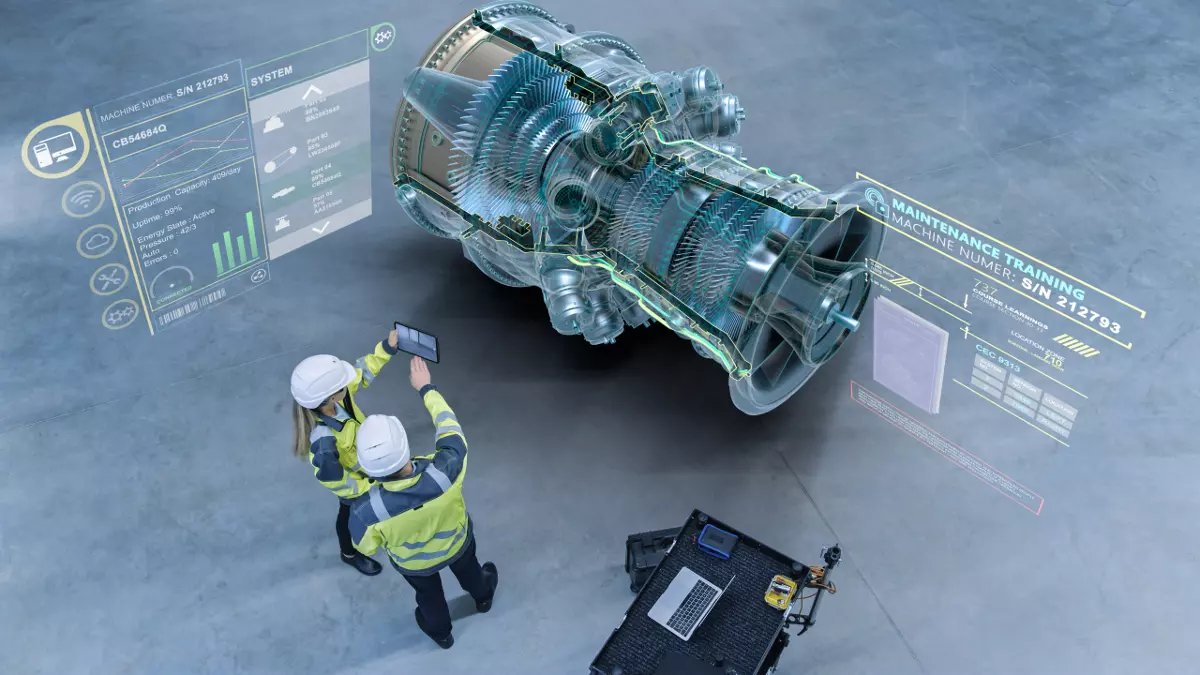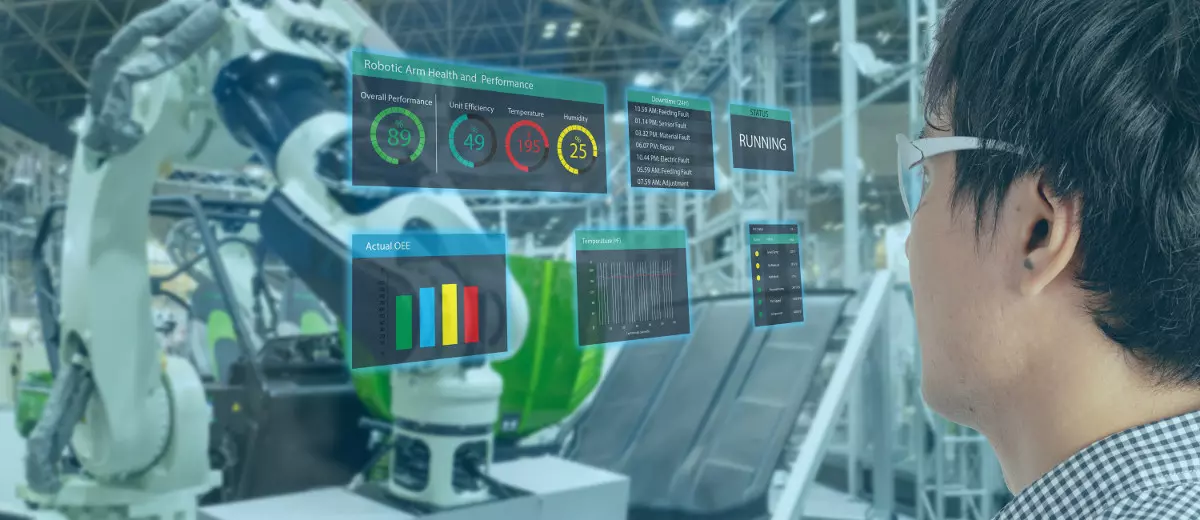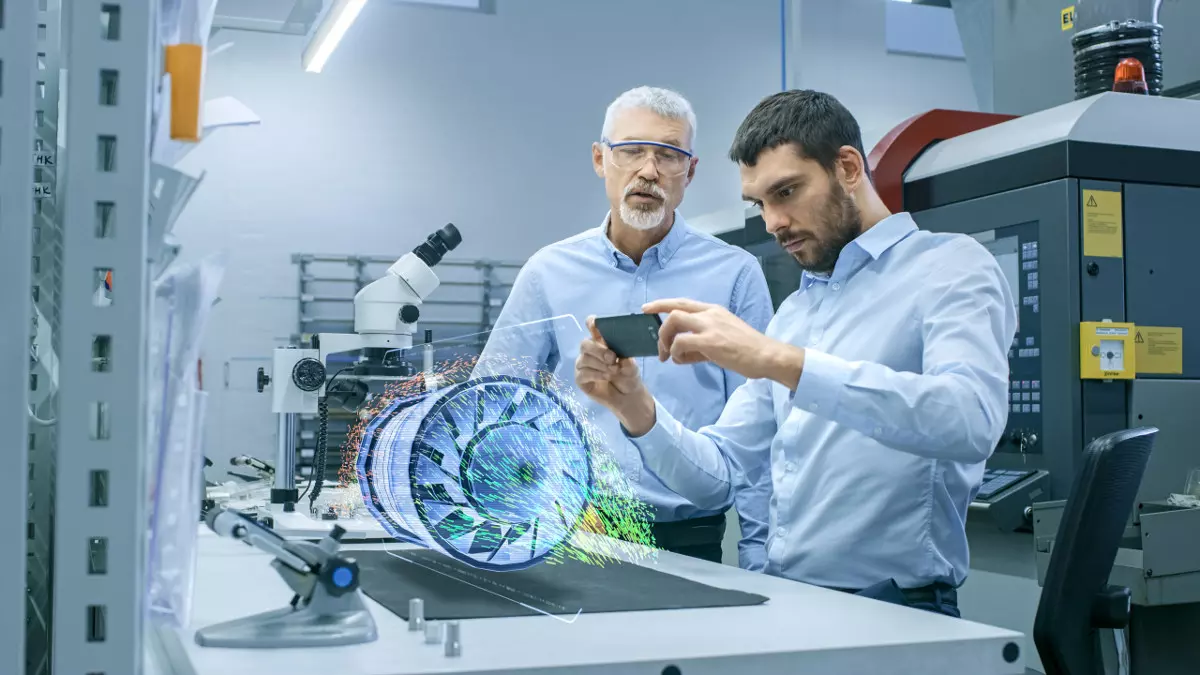Augmented Reality in Business: How it Works
When we hear the term ‘augmented reality,’ visions of a high-tech future like the ones in the show Black Mirror might come to mind, but really, augmented reality is a technology that has been around for a long time. In fact, it’s possible that augmented reality makes a regular appearance in your everyday life. For example, every time you use your car’s backup camera or snap a photo using a filter on Instagram, you are using augmented reality.
Augmented reality (AR) is defined as a “technology that superimposes a computer-generated image on a user’s view of the real world, thus providing a composite view.” In layman’s speak, AR is any digital technology that enhances the real world by rendering digital images and other data types and projects it onto the natural environment.
AR is not to be confused with virtual reality (VR), a computer-generated environment that exists entirely apart from the natural world and is inhabited through a wearable display.
Augmented reality is called such because it augments the user’s visual, auditory, or other sensory experience with the physical world. In a business context, AR can be used to overlay words, numbers, visual and auditory information over a captured image of the user’s environment so that users can integrate data into their daily tasks.
You can think of AR as just another (albeit more advanced) tool in your company’s productivity and work management systems meant to help you complete tasks with optimal efficiency. Using AR, employees can increase productivity and achieve goals they couldn’t otherwise without the help of technology. You can also use it for augmented reality marketing. On its own, AR can’t replace human employees. But, combined with human brainpower, it can lead to new results.
How Augmented Reality Works

There are three basic elements of augmented reality. For a technology to be considered augmented reality, there must be:
- A data source
- A presentation of data
- Interaction between data and the natural world
Let’s break those three elements down.
The source of data comes in the form of sensory inputs in the environment, which are captured through tools like sensors, cameras, and what is called the Internet of Things (IoT). The Internet of Things is a broad term for the billions of devices that are connected via the internet. Any device that shares and exchanges information over the vast network that is the internet is part of the IoT.
The presentation of data is information that is collected by the sensors, cameras, or IoT, then overlaid onto the analog world. This might be a visual overlay, auditory cues, live video, and more.
Interaction between data and the natural world refers to howusers interact with the information they glean from the presentation of data. Examples of how someone might interact with and use this information include gestures, voice commands, and live video streaming.
Why Augmented Reality for Business?

So, where does business come into play when we talk about AR? It may surprise you to learn that AR is already utilized in many industries. It’s used for shopping, entertainment, and in the evening news, so why not for business?
Every industry has its own variables that must be contended with. While it’s true that AR may be a no-brainer to some businesses more than others, chances are your company accomplishes a wide range of tasks and goals that could be accomplished more intuitively with the use of AR technology.
Take a construction company, for instance. Construction workers come into contact with perilous situations every day. They have to work around and operate heavy machinery and power tools and must always be alert on the job site. Safety is a good supervisor’s number one concern. Augmented reality applications can teach employees about workplace safety and are much more effective than hours of lectures and slideshow presentations. With AR, construction workers can take a hands-on approach to this training, and supervisors can see precisely where safety hazards may exist.
Of course, safety is important in any workplace. Consider, also, that the second most common personal injury claim in the workplace is slip and fall accidents. Using AR technology, employers can mitigate the risks of common workplace injuries and avoid hefty lawsuits.
Here are five ways AR technology can improve business performance:
- Move your business toward innovation through collaboration. It’s an understatement to say that communication has been strained during the pandemic. Even as we enter the late stages of the pandemic, some businesses are still operating remotely. Right now, business owners need all the integration and communication they can get, and AR helps you accomplish just that. We know that collaboration leads to innovation, and AR helps teams collaborate better through AR functionalities like the “see what I see” approach. By allowing users to share information with one another easily, AR provides more opportunities for collaboration.
- Allow top performers to work more efficiently. Too often, employees get bogged down by necessary but inconvenient tasks, distracting them from the innovative work they could be doing. Or their time is spent supervising and mentoring other employees. In some scenarios, AR can take over much of that responsibility and workload, leaving time for employees to focus on their most important projects.
- Train employees with ease. Whether it’s onboarding, technical training, preparedness training, or the like, the possibilities for educating with augmented reality are endless. Using AR, employees can learn in a simulated, risk-free environment more efficiently than through traditional methods.
- Advance your customer communication. Companies looking to grow their influence and revenue should be engaged with efforts to communicate with their customers. Just as AR improves communication between employees, it also allows for new channels of communication with customers. Research shows that consumers, nowadays, have an ever-increasing preference for self-service. AR is used in many self-service stations like checkouts at busy retailers. In this example, AR in self-checkouts allows customers to complete friction-less transactions when they’re in a hurry. It’s a huge convenience that leads to happier customers and more sales.
- Use augmented reality marketing strategy. AR can also be used as an effective media communication tool between businesses and customers. Just as it can be used to increase engagement among employees in the workplace, it can also draw customers through marketing strategy.
Augmented reality can be found in many industries but is most commonly used in manufacturing, media and communication, education, healthcare, and transportation. Below, we’ll explore how each of these industries, and more, have their own specialized use for AR technology.
Architecture, Engineering, and Construction
Utilize AR technology to manage complex architecture, engineering, and construction projects across various stages from design to planning and execution. With AR apps for architecture, you can easily visualize 3D construction models to simplify displaying project details. Moreover, check whether the requirements have been met on the ground according to the schemes.
Augmented reality has manifold advantages in architecture, engineering and construction, and industry, from small-sized projects to large-scale ones.
- Time commitment and cost-efficiency
- Visualize 3D CAD models in AR
- Improved stakeholders communication
- Comply with safety standards
Manufacturing

Because AR allows businesses to increase efficiency in areas like inspection, safety, quality assurance, and design and assembly, AR is hugely prevalent in manufacturing; specifically, car manufacturing. Most of the world’s leading auto manufacturers — Volkswagen, Jaguar, LandRover, and BMW, to name a few — use immersive augmented reality technologies in their work processes. Augmented reality allows nearly everyone involved in the car manufacturing process, from beginning to end, to get more precise results. Engineers use AR when designing the vehicle’s hardware, while quality assurance inspectors use AR in crash simulations to determine a vehicle’s safety before it goes to market. Car manufacturers have found that using AR significantly reduces expenditure and saves precious time that could be better spent improving their products’ design and quality.
Aircraft manufacturers are also heavy users of AR. AR helped Boeing increase productivity by 40% and reduce the time technicians spent wiring aircraft by 25%. This was achieved through AR devices like smart goggles. Like their counterparts in car manufacturing, engineers and designers can use AR to develop product structures and evaluate design.
Media and communication

As mentioned above, AR can deliver powerful results in effective communication, so it should come as no surprise that this technology is frequently used in the media and communication industry. It’s not an exaggeration to say that AR is changing the way we interact with each other.
For some media and communication companies, AR is part of the appeal of their product. For example, Instagram and Snapchat are popular because they allow users to take photos with fun, animated filters. The appeal for AR in social media hasn’t worn off, either.
In another sector of media and communication, AR has led to new media forms altogether. For instance, AR has led to a whole new way of experiencing news stories. Many have pondered whether it might be the future of journalism. Some media companies already utilize robots for some tasks that used to be done by journalists.
Education

In the past year, educators have had to rely on remote learning tools. AR has been an invaluable tool in the virtual classroom. In addition, the so-called “e-learning” industry is booming right now because of AR’s capabilities to transform how students learn. Classroom education doesn’t have to be boring, or even in a classroom. Students can now use e-learning tools to interact with subject material. This engagement leads to students learning and memorizing information faster and more effectively. This is especially true for visual and auditory learners.
Healthcare

In some industries, employees can’t afford to make mistakes. Healthcare is undoubtedly one of them. With AR, healthcare professionals can practice medical procedures without putting patients at risk. For example, 3D holograms of bodies can be used to practice surgery. In this way, 3D visualizations of organs can help trainees understand complex medical concepts and procedures in an interactive, risk-free environment.
Other industries where augmented reality comes in handy include:
- Software
- Retail
- Mechanical services
- Marketing
- Navigation
- Travel
- Law enforcement
- Construction
Augmented Reality in Professional Training

Some processes are ubiquitous across every industry. Even if your business isn’t in one of the above categories, you can still use augmented reality to help you with unavoidable events like onboarding.
As any hiring manager knows, onboarding is a pain, and companies constantly look for ways to make the process more efficient. Onboarding involves many contact points between departments, introductions, paperwork, and hours of orientations and training. Augmented reality can be used to make this painstaking process a breeze. It can reduce the time needed for new hires to acclimate to their role.
Onboarding has been made even more slow and tedious by remote work, which is becoming increasingly common. Even after the pandemic retreats, many roles will likely continue to be done remotely. Many people are finding out for themselves the many benefits of being an independent contractor. For those roles, there must be a way for remote employees to stay on the same page as on-site employees. An independent contractor who works in construction, for example, would find “see what I see” AR tools invaluable for surveying a job site from the perspective of an on-site employee.
AR can also teach product knowledge by allowing employees to learn the elements of a piece of equipment or a product. An AR program such as this might enable employees to learn about a product to examine and interact with virtual objects while learning about their capabilities and features.
AR can aid in teaching complicated multi-step tasks. Employees can learn how to maintain and repair equipment or complete other activities with step-by-step instructions. A bonus of this is that fewer resources need to be allocated to training employees. Managers can spend more time on their own projects and leave the supervision and instruction to AR.
Benefits of AR Training

In conclusion, we can see no shortage of benefits to using AR in the workplace, especially for training purposes. Below are some final advantages of AR training.
- Risk-free training: In environments where mistakes can be deadly, like car manufacturing, construction, and healthcare, trainees can learn important instructions through visualizations in a safe environment.
- Fewer resources: AR training eliminates the need for long, ineffective training by condensing it into more efficient and practical lessons. This means less time and money spent training employees.
- Boost engagement: AR technology is just plain fun, and for that reason, more effective. Research shows that employees learn better when they use AR tools. It lowers the learning curve significantly, especially for visual and auditory learners. Hands-on training means employees learn faster and retain more information for more effective training sessions.
- More potential for training, even for advanced employees: We should never stop learning, and with AR, we don’t have to. AR has so much potential for lifelong learning, even for the most senior employees at a company.